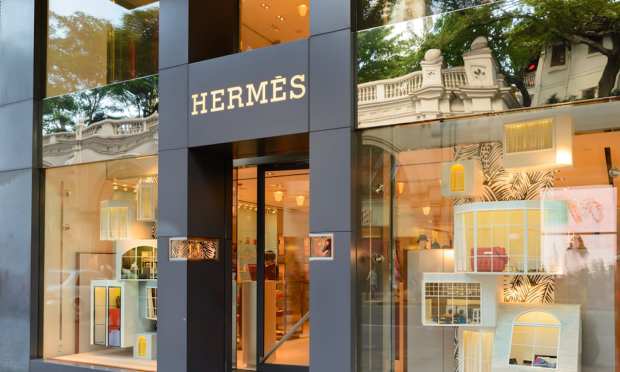Hermès Outpaces Luxury Rivals As Q4 Results Show Chinese Demand For $15K Purses

Strong Asian demand for leather bags, wallets and even $900 sneakers saw the French luxury design house and retailer Hermès post a 12.3 percent increase in fourth-quarter sales, as the company announced on Friday (Feb. 19) from its headquarters in Paris. The strength of its second-half results was enough to pare the company’s full-year revenue decline to just 6 percent for 2020, the company said, pointing to the momentum it saw in the final three months of the year.
“To record only a 6 percent drop in sales after the most horrible year for the luxury industry ever was an outstanding result,” said Bernstein analyst Luca Solca, noting the company’s cross-border appeal and the long wait times to buy some of its iconic products.
Despite global travel restrictions that hurt the entire luxury industry, Hermès’ direct-to-consumer (D2C) sales and four dozen retail stores in China accounted for half of the company’s revenue, with Asian sales — excluding Japan — rising 43 percent. “The absence of tourists was offset by the loyalty of our local customers and a strong increase in online sales,” Chairman Axel Dumas said on a call with analysts and investors.
By comparison, the company said its European Q4 sales were down 11 percent, while its sales for the final three months of the year in North and South America fell 6 percent.
A Unique Experience
The surprisingly strong sales at Hermès come at a time when most of its rivals have not been as fortunate. WWD points out that sector leader LVMH Moët Hennessy Louis Vuitton reported a 3 percent decline in Q4 sales, while Gucci parent Kering saw a 5 percent decline.
“With over 20 percent retail revenue growth in the fourth quarter, Hermès appears to be in a different league,” Citi Analyst Thomas Chauvet told Vogue Business. “On a full-year 2020 basis, it has been by far the most resilient brand in the luxury sector. It further supports the validity of a unique family-oriented business model built around timeless style, product quality and durability, and deep relationships with the local clientele.”
Besides its mainstay leather products, including $10,000+ Birkin bags, Hermès’ jewelry and home goods category rose 52 percent, while its comparatively small watch business rose 25 percent. At the same time, silk and textiles fell 4 percent and perfume was down 10 percent.
“The solidity of our results reflects both the desirability of our collections and the agility of our craftsmanship model, and I thank our customers for their loyalty all over the world,” Dumas said. In addition, he said the company’s 16,000 employees would receive special bonuses of about $1,500.
Not Out of the Woods
Given the ongoing uncertainty surrounding the pandemic, Hermès did not give hard full-year earnings guidance, saying that the scale, duration and geographic extent of the COVID crisis evolves every day. “In the medium term, despite the economic, geopolitical and monetary uncertainties around the world, the group confirms an ambitious goal for revenue growth,” a company statement said, adding that 2021 would mark a continuation of its odyssey.
The pandemic has forced luxury retailers to double down on ways to connect with shoppers who were not coming to stores, while still offering highly customized and personalized experiences. In most cases, this has seen increased investment, as was the case last month when Dallas-based department store chain Neiman Marcus announced plans to spend $85 million on “talent, merchandising, technology and supply chain that will reshape the Neiman Marcus and Bergdorf Goodman customer experience.”
